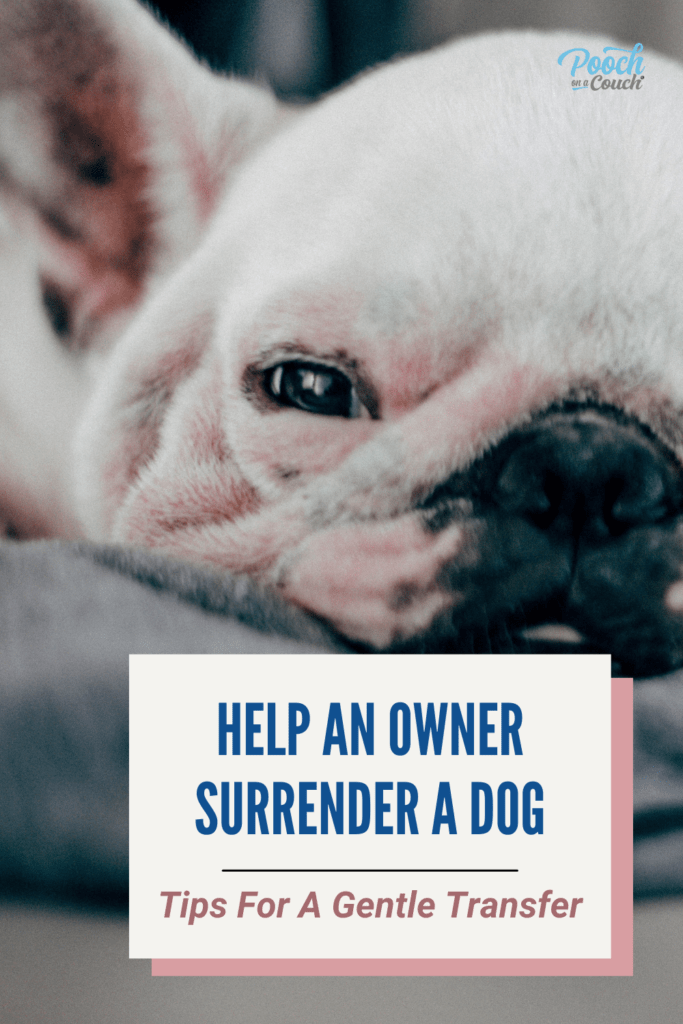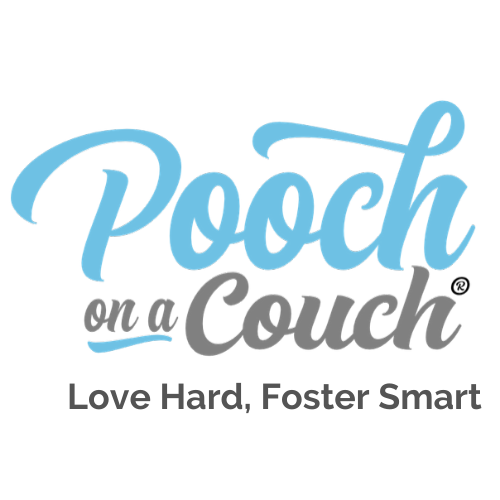I haven’t been able to foster a dog for a long time, except for the occasional brief sleepover. My life just isn’t in a place where I can properly foster a dog. It’s hard; I miss it so much!
So, when the opportunity arises to help a rescue dog in a way that doesn’t involve fostering, I jump at the chance! One way is to help an owner surrender a dog.
(This is a re-write of a blog post written in 2018.)
Sometimes, I’m asked to go meet and help an owner surrender a dog to a rescue agency.
I consider it an honor to help an owner surrender a dog.
I’ve met many a person to accept an owner surrendered dog to rescue. Old dogs, little puppies, and everything in between. Reasons vary, and honestly? The vast majority of the reasons were the right decision for the dog. The decisions were made out of love for the pet.
Everyone who’s handed me their pet looked me in the eye with emotion: sadness, guilt, worry, and yes – relief. Relief because I told them in detail how the rescue will care for their dog. I believe delivering dignity and respect is right, even in the most disappointing situations.
I don’t think people suck for wanting to owner surrender a dog.
How To Help An Owner Surrender A Dog
- Be as available as you can be
If an owner is expressing urgency, they are feeling urgent. Honor that feeling. You may not be able to come and get their dog right away, but try and help them problem solve their situation.
I’ve helped families come up with a safety management plan, interim vetting help, and most importantly, frequent updates. Don’t let weeks and weeks go by with a promise to help owner surrender a dog but no contact.
There are ways to kindly help that person who threatens to “take the dog to the shelter.” Keep handy those kind but firm repeatable sentences when an owner becomes frustrated. An owner always gets to decide who they give their dog to. - Know your agency’s policies and forms
An owner surrender is a binding contract. Never accept a pet before policies are reviewed with the surrendering owner and forms have been signed. I also think it is a good idea to have your OS form reviewed by an attorney. Cover all the bases, you know?
It used to be that when an owner surrenders a dog, we told owners that we wouldn’t give any updates on their dog. We did that to protect the foster homes and protect the administration for decisions made.
I think there’s a kinder way.
I’ll tell you how further down. - Take the bags and bags of stuff that comes with the dog.
Don’t say, “we have our own food, donate it” or “we don’t use (name your product)”. Take it. Take it all. Take things that smell like pee. Take the dog food you’d never feed. Take the dangerous rawhide chew. The broken crate.
Worried about your car? Keep a tarp in it.
Dispose of stuff later, donate food.
Ask them where the dog’s favorite toy is. Give it to the dog (if safe.)
Now is not the time to educate a person on quality food or dangerous toys. They are giving from the heart. - Tell the person what the next week will be like for their pet.
Tell them you will take the dog to the vet for a check up. Usually, a dog that is “up-to-date” on vetting is not up to date based on our protocol. All of our owner surrendered dogs go to the vet, pretty quickly, too. We often find things wrong: Ear infections, mast cell tumors, need for dental cleaning, etc. Rarely is there documentation of bloodwork. We always do labwork unless we are dealing with a very young puppy.
Tell them about your foster homes. What they are like. The skill level. What other pets are in the home. Do tell them your policies on visitation and contact with fosters.
Most rescue agencies know prohibit visitation from former owners. It’s confusing for the dog, and it does not offer your foster home the boundary they need in order to best care for the dog.
I think that it is helpful for an owner to watch you put an ID tag of some sort on the dog. It is a visible transfer of ownership. - Talk about future contact after an owner surrenders the dog.
I always remain a point of contact with owners surrendering a dog to me. I give them the links to social media. I tell them they can contact me anytime they want to ask questions about how their pet is doing. I do tell them that I lose updates once the dog is adopted.
I do not – DO NOT – give contact to the foster family. If I’m the foster family, that’s different. I become the go-between between the foster family and the surrendering family. I’m really big on boundaries. I think they are important.
Recently, I picked up an owner surrender dog that needed knee surgery. (There were other issues surrounding safety for the children.) I remained in contact with the family, they helped circulate our fundraiser for the knee surgery, I responded when they reached out for an update, and I let them know he was adopted. They appreciated the good care and it gave them closure. - When the situation is urgent, it is urgent. Do what you can to do to get the dog to safety.
My mentor always said, “get the dog. We will figure out the rest later.” - Let the dog grieve.
I’m changing some of the details of this story to protect the owner for no other reason than I want to. While I could question decisions made for this dog, ultimately the phone call she made to me was one that saved his life and gave him much-needed care.
I’ll call him Max, this is his story.
A few days prior, the rescue imposed an intake freeze due to funds, lack of foster homes, and current special-needs dogs that needed extra attention. When on an intake freeze, calls for help are still answered and efforts are made to get the family to a source that can help them quickly.
This person called me as she sat in the parking lot of a shelter, Max in the car, with 15 minutes to closing. She’d run out of options. Holding a list of rescue organizations given to her by the shelter staff, she’d begun to call. The organization I’m affiliated with was at the top of the list.
She shared her plight.
Recently, she moved her residence and chose a place that didn’t allow dogs. She planned to sneak him in anyway, but learned there were many eyes on the apartment grounds. She knew she’d be found out, she said.
For weeks Max lived by himself in the apartment she’d vacated. I was told he’d received daily visits and had fresh food/water. But she’d turned in the keys that day and now Max was truly homeless. He had nowhere to go.
I told her I’d call her back in 5 minutes and for her to NOT go inside the shelter. I knew that if she left him at this particular shelter, I’d have no further influence on where he’d go. I didn’t know then that because of his condition, my direction would also save his life.
Getting Max to safety and beyond.
I found a transporter 30 minutes away and made arrangements for Max to be surrendered to her, I would then meet her in an hour to get him and foster him overnight.
In owner surrendering Max over to the transporter, the owner said, “I think he’s getting another ear infection.” I’d been told he had history of these recurrent infections, but I didn’t know the owner thought one might be brewing.
The transporter called me and said, “Are you sure you don’t want to take him to the vet tonight? He doesn’t look well.” We changed plans, and I met the transporter and Max in the vet clinic parking lot.
Max and I sat in the lobby of the vet clinic. He was on my lap. His collar was dirty and his leash was faded, knotted and broken. He hadn’t wagged his tail, looked me in the eye or in any other way tried to interact with me.
Then, he held his head down low and he began to wail.
A low and long wail, one that came up from his toes through his soul and out of his mouth.
I used my words to try and soothe him. Patrons sharing the lobby with me were in tears. He sounded pitiful. He WAS pitiful.
He would stop crying for a moment, trying, maybe? to be comforted by my care, but he’d begin again. An awful wail. Was this grief?
I assumed that he was in some pain from his “brewing” infection, but these cries sounded different -was he also mourning the loss of his owner when he needed her the most?
I showered him with words of empathy and promise. It was all I had. And I let him grieve.

Max’s infection was diagnosed as severe. So severe, it would require specialty surgery in the near future. Immediately, he was hospitalized to control the pain and to begin aggressive antibiotic treatment.
I came back for him the next day to transport him to his next stop where he could get needed specialty services.
In a few weeks, after surgery, I saw a video of him playing with his canine foster pals; he was happy, bright-eyed, and having the time of his life.
Promise kept.

Content: ©2022 • Pooch On A Couch • All rights reserved
Popular Posts
- HOW TO CHOOSE A DOG RESCUE AGENCY
- ULTIMATE GUIDE TO FOSTERING: 10 SKILLS YOU NEED
- VOLUNTEER IF YOU CANNOT FOSTER





